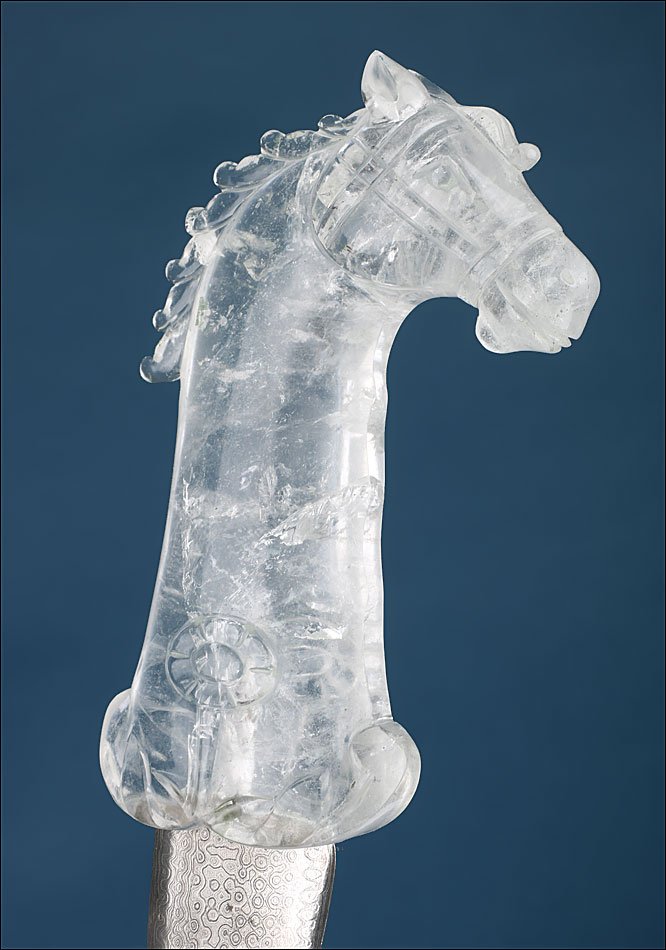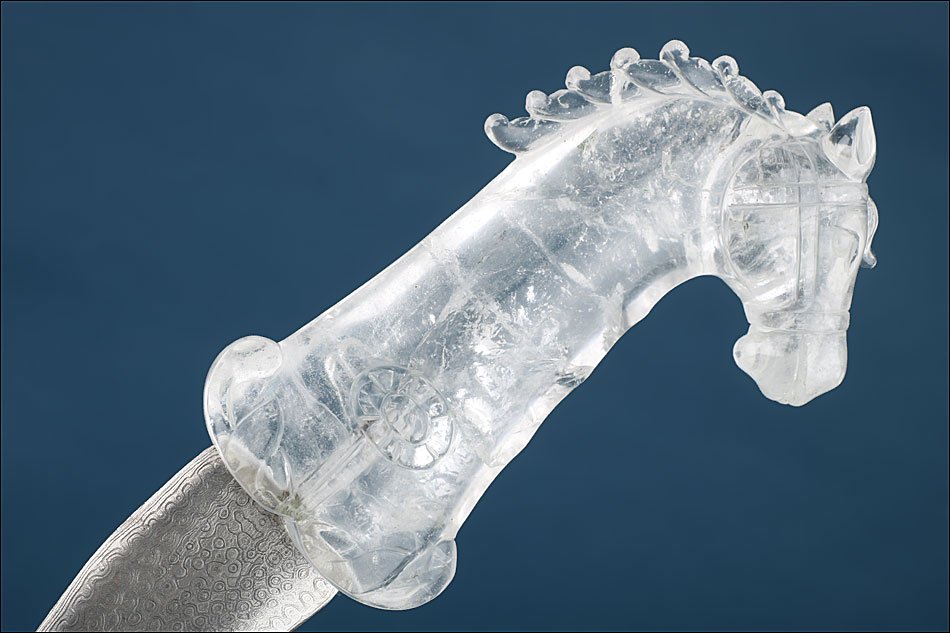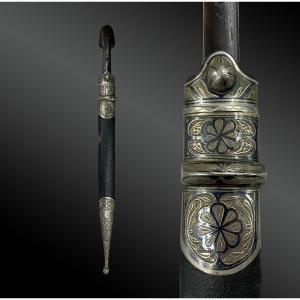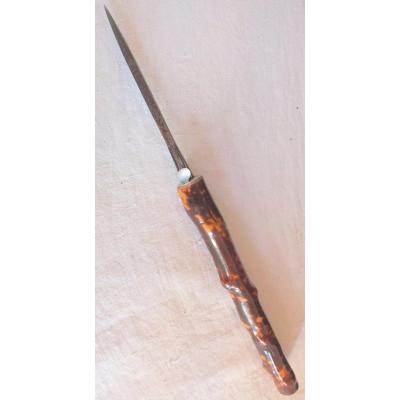The hilt, meticulously carved from a block of clear quartz or rock crystal, takes the shape of a finely sculpted horse’s head. Its execution is absolutely masterful, with each detail, from the upright ears to the horse’s expression, including the tack and mane, rendered with remarkable fidelity, characteristic of the finest craftsmanship of its time.
The blade, forged in damascened steel, features an undulating or flame-like shape, typical of this kind of ceremonial weapon. The steel pattern is extraordinarily well defined, with multiple layers forming swirls and concentric lines, a testimony to the forger’s technical mastery.
This type of blade was not only decorative but also effective in combat, as the waves increased cutting power and inflicted harder-to-treat wounds. At the point where the blade meets the hilt, a floral motif is engraved, adding a touch of grace and harmony to the whole.
The dagger shows no visible defects or cracks, which is exceptional for an object of this age. Rock crystal, traditionally associated with purity, protection and spiritual strength in Hindu culture, adds an extra symbolic dimension to the piece.
Daggers like this were used in ceremonial contexts and often offered as gifts to express respect and status among rulers and nobles.
A piece like this not only reflects the history of the Indian subcontinent and its refined decorative arts, but also represents a fantastic investment opportunity. Its state of preservation, quality materials and artisanal execution make it perfect to enrich a collection of edged weapons, Oriental pieces or high-value antiques.
It would also look stunning as a decorative element in a study, a collector’s room or a historically themed space.
A true testament to the martial artistry of the East and a rare jewel in today’s market.
Measurements: 41 cm (16.14 in) total length, Blade: 26.5 cm (10.43 in).
History of the Khanjar Daggers and Rock Crystal
Khanjar daggers originated in the Middle East and South Asia, especially in India, Iran and Mughal-influenced regions. While initially meant for defense, they soon became prestige items, and during the Mughal era were transformed into luxury objects, worn by nobles, sultans and dignitaries as symbols of power, wealth and bravery.
In India, such knives were also ceremonial, used in rituals and significant events like royal weddings or peace treaties.
The hilt carved from rock crystal or clear quartz is not only a technical feat, but also a meaningful one. In Hindu cosmology and many Eastern traditions, this material was thought to possess magical and protective properties.
Rock crystal symbolized mental clarity and spiritual connection, which is why it was commonly used in objects of power such as ceremonial weapons. The damascened blade, on the other hand, originated in Damascus, Syria, and was later perfected in India. Its waved pattern, created by layering and forging different steels, strengthened the blade and made it visually unique.
Such weapons were used by great warriors, religious or military leaders, and later became coveted by European collectors, fascinated by the exotic appeal of the Orient.
Today, Khanjar daggers made from noble materials are extremely valued in both museums and private collections. Their rarity and symbolic make them highly sought-after in the antique market.














































 Le Magazine de PROANTIC
Le Magazine de PROANTIC TRÉSORS Magazine
TRÉSORS Magazine Rivista Artiquariato
Rivista Artiquariato